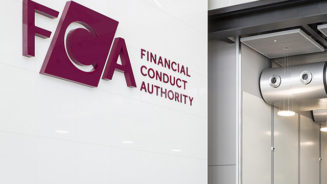Among the tweaks is an extension of the deadline by when Liechtenstein financial intermediaries are required to have informed their UK clients about their need to meet their UK tax obligations. Originally set for the end of this month, it has been extended to the end of March 2012, “due to the complex steps [involved] in ensuring all UK residents [with assets held in Liechtenstein] are identified, and the larger than anticipated number of people likely to receive” such notification, HMRC said in a statement.
It said the extension had been agreed following negotiations between HMRC and the Liechtenstein government.
Katja Gey, director of Liechtenstein’s Office of International Affairs, said “virtually all” of Liechtenstein’s financial intermediaries had completed their work in identifying those clients whose UK connections would result in their notification of their need to come forward. But the three-month extension for formal notification, she added, would “permit our intermediaries to establish the relevant beneficial interests, and ensure that the entire process reflects the sympathetic and helpful approach HMRC and Liechtenstein are committed to”.
The Liechtenstein Disclosure Facility (LDF) was unveiled by HMRC and Liechtenstein in 2009, and was conceived as a way of achieving two goals: enabling UK businesses and individuals with undeclared assets held offshore anywhere in the world to “come clean” – by transferring a relevant portion of them to Liechtenstein and entering into a disclosure – while at the same time helping Liechtenstein to transform its financial services business model to that of a modern asset management centre, from one based on secrecy.
Under the terms of the Liechtenstein Disclosure Facility, businesses and individuals have the opportunity to declare previously hidden tax liabilities. The LDF was drawn up after data stolen from a major Liechtenstein bank owned by the country’s royal family was used by Germany to prosecute tax evaders in 2008.
The LDF is considered more generous to UK taxpayers than other recent tax amnesty schemes. As of the end of September, 1,721 individuals had come forward under the scheme, according to HMRC, which declined to say how much it had received in back taxes and penalties as a result.
A spokesman said the amount would be released once the disclosure scheme was closed and the final sum had been tallied.
The 1,721 figure is more than four times the number who had come forward as of the end of March 2010, when there were concerns that the programme had not received sufficient publicity.
To read the HMRC statement extending the deadline, click here. For an explanation on HMRC’s website of the LDF, click here.
| Runs until 31 March 2015 |
| Penalties are capped at 10%, with no penalty at all in cases of "innocent error". Full interest on the undeclared assets is due. |
| There is also a composite rate option, under which liabilities to various takes can be covered by accepting a flat rate of 40% on income and gains |
| The assessment period is limited to accounting periods/tax years commencing on or after 1 April 1999 |
| Those making disclosures under the Liechtenstein facility are being offered a "single point of contact", which HMRC said was created to accommodate individuals with "specific needs due to the complexity of their financial affairs", which it noted is typical of many of the types of individuals who are likely to consider an LDF declaration |
| Those making declarations under the LDF are guaranteed immunity from criminal prosecution for tax offences, in return for legitimate full, accurate and unprompted disclosure |




